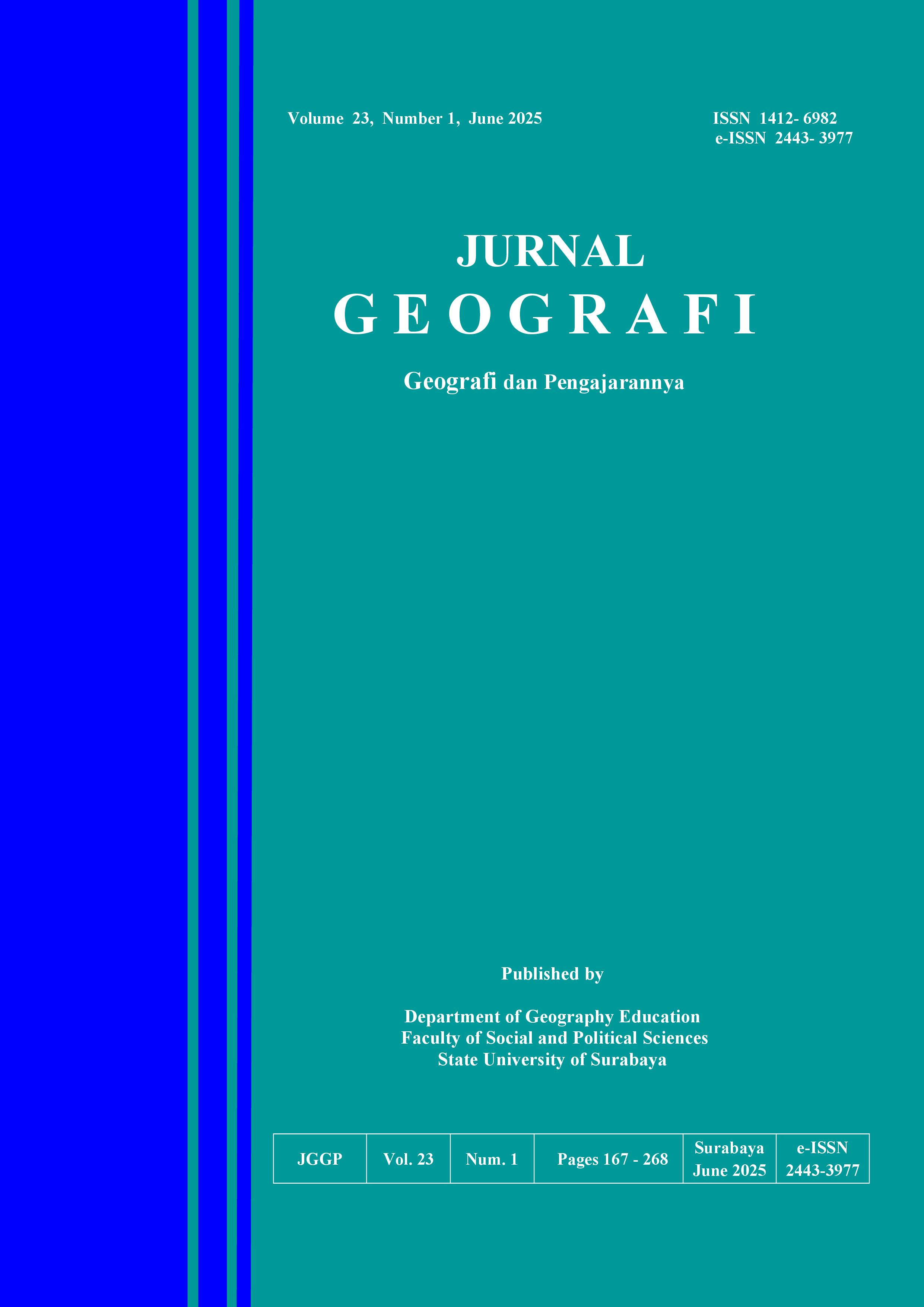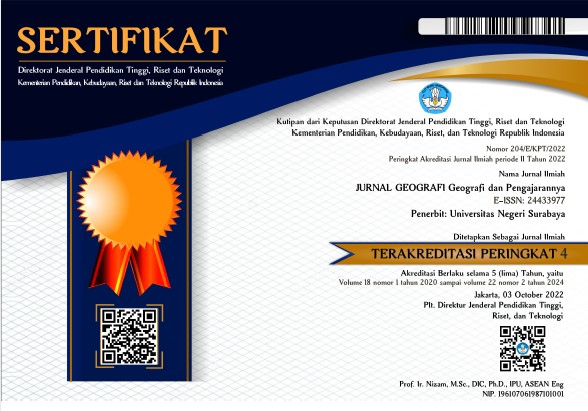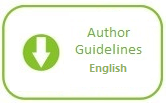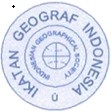SPATIAL ANALYSIS OF URBAN FLOOD VULNERABILITY USING WEIGHTED OVERLAY TECHNIQUE FOR IDENTIFICATION OF HAZARD ZONES IN GREATER JAKARTA
DOI:
https://doi.org/10.26740/jggp.v23n1.p223-238Abstract
This study assessed flood hazards in the Greater Jakarta area, Indonesia, using geospatial analysis and the weighted overlay method in a Geographic Information System (GIS). There are variables used, which are vegetation index, wetness index, Topographic Position Index (TPI), distance to water bodies, and altitude. The classification results showed five levels of hazards: very low (0.48%), low (1.60%), medium (28.70%), high (48.96%) and very high (20.26%). A total of 69.22% of the study area of 6,724.18 km² was classified as high to very high. The findings emphasise the need for risk-based zoning and mitigation strategies, such as improved drainage and land use regulation. This research highlights the role of geospatial technology in supporting climate adaptation planning, in line with Sustainable Development Goal (SDG) 13, to increase the resilience of coastal-urban areas to increased flood threats due to climate change.
Keywords: Flood Hazard Mapping, Geospatial Analysis, Climate Resilience
Downloads
Downloads
Published
How to Cite
Issue
Section
License
Copyright (c) 2025 Ikhlas Nur Muhammad, Sarpono, Agus Wibowo, Rachmat Setiawibawa, Anwar Kurniadi

This work is licensed under a Creative Commons Attribution-NonCommercial-ShareAlike 4.0 International License.
 Abstract views: 356
,
Abstract views: 356
, PDF Downloads: 378
PDF Downloads: 378
















